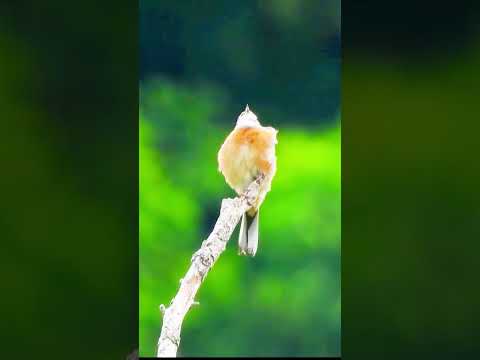Discover the enchanting song of the Meadow Bunting (Emberiza cioides), also known as the Siberian Meadow Bunting, in this captivating video! Listen to its distinctive song: a rapid burst lasting 1-2 seconds, repeated after a short pause. You’ll also hear its characteristic call, a two to four-note series (“zit-zit-zit”).
The Meadow Bunting is a fascinating songbird found in [mention region if applicable, e.g., East Asia, Siberia]. This video showcases the beauty and uniqueness of its vocalizations.
Perfect for birdwatchers, ornithologists, and anyone who appreciates the soothing sounds of nature. Learn to identify the Meadow Bunting by its song and call!
🐦 Overview:
The Meadow Bunting (Emberiza cioides), also known as the Siberian Meadow Bunting, is a passerine bird native to eastern Asia. It is part of the Emberiza genus in the bunting family Emberizidae.
Description:
– Size: 15 to 16.5 cm long.
– Male: Primarily rufous-brown with dark streaks on the back, with a boldly patterned head featuring brown with white eyebrows, moustachial stripe, throat, and grey sides to the neck. The outer tail feathers are white, and legs are pinkish-brown.
– Female: Similar to the male but duller, paler, and with a less defined head pattern.
– Juvenile: Even duller than females with fine streaking on the head.
– Distinctive facial pattern includes a long, broad white supercilium extending to grey collar, white malar stripe, black lores and lateral throat stripe, and chestnut ear coverts and crown.
– Upperparts: Rufous-brown with faint streaking on the mantle and unstreaked rump and uppertail coverts.
– Underparts: Rufous grading to off-white on the belly.
– Bill: Black above and grey below with a black tip on the lower mandible.
– Feet: Brownish-pink.
Habitat:
– Adaptable and less fussy about habitat compared to other buntings.
– Found in lightly wooded hills, open scrub, near agricultural land, and areas with thickets or dense grass for foraging and nesting.
Behavior:
– Song: A rapid burst lasting 1-2 seconds, repeated after a pause.
– Call: Two to four-note series (“zit-zit-zit”).
– Breeding: Nests are built low in bushes or on the ground.
– Breeds in southern Siberia, northern and eastern China, eastern Kazakhstan, Kyrgyzstan, Mongolia, Korea, and Japan.
– Mostly non-migratory, though northern birds may move south in winter.
Notable Variants:
– Various subspecies exist with slight differences in plumage, particularly among populations in China, Korea, Japan, and surrounding regions.
The bird is commonly seen in dry, open habitats such as scrub, farmland, grassland, and open woodland. Pairs are typically monogamous and may use the same breeding area for several years in a row.
#MeadowBuntingSong
#SiberianSongbird #BirdSounds
#EmberizaCioides
